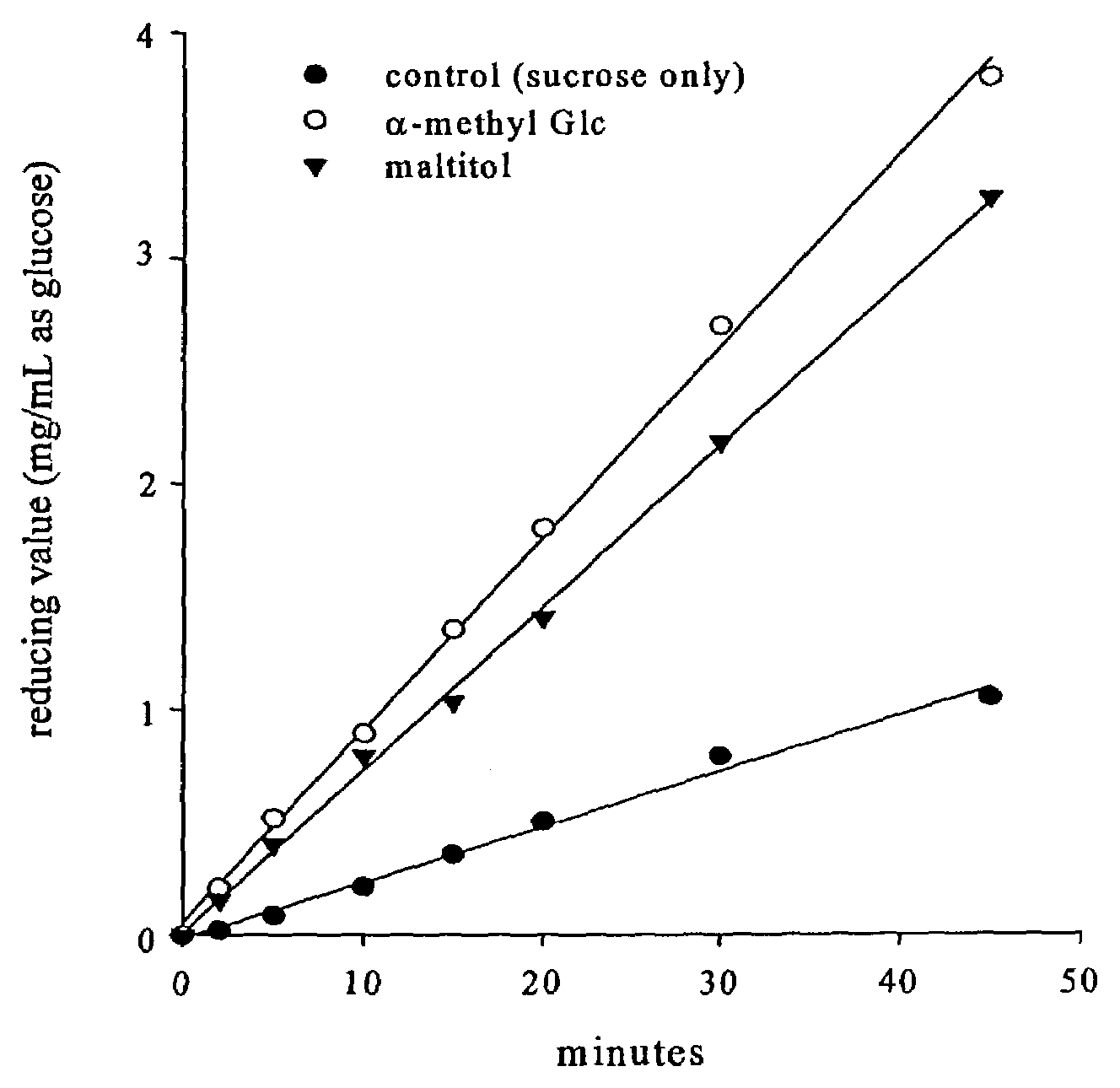Prebiotic oligosaccharides via alternansucrase acceptor reactions
a technology of alternansucrase and prebiotic oligosaccharides, which is applied in the direction of biocide, peptide/protein ingredients, transferases, etc., can solve the problems of relatively few products developed to facilitate such efforts, and the number of enteropathogenic bacteria is substantially reduced, and the effect of promoting the growth of beneficial bacteria
- Summary
- Abstract
- Description
- Claims
- Application Information
AI Technical Summary
Benefits of technology
Problems solved by technology
Method used
Image
Examples
examples
[0033]The preparation of oligosaccharides from a number of acceptors, their isolation and structural identification, and prebiotic activity were examined.
Alternansucrase
[0034]The alternansucrase preparation used in these experiments was isolated from Leuconostoc mesenteroides NRRL B-21297, a proprietary strain that secretes alternansucrase at enhanced levels, and does not produce dextransucrase (14–15). Bacteria were grown at 28° C. in a stirred, 10-liter batch fermentor in the medium previously described (Côté et al., J. Ind. Microbiol. Biotechnol. 1999, 23:656–660). After inoculation of 9.5 L medium with 0.5 L of 24-hour culture, the contents were agitated at 150 rpm, with aeration at 0.4 L / min. The pH was maintained at 5.5 by addition of 1M NaOH. Bacterial cells were removed after 24 hours by centrifugation at 16,000×g for 20 minutes. The culture fluid was concentrated by tangential flow ultrafiltration over 100,000 MW cutoff membranes, and subsequently diafiltered over the same ...
PUM
| Property | Measurement | Unit |
|---|---|---|
| Frequency | aaaaa | aaaaa |
| Frequency | aaaaa | aaaaa |
| Frequency | aaaaa | aaaaa |
Abstract
Description
Claims
Application Information
 Login to View More
Login to View More - R&D
- Intellectual Property
- Life Sciences
- Materials
- Tech Scout
- Unparalleled Data Quality
- Higher Quality Content
- 60% Fewer Hallucinations
Browse by: Latest US Patents, China's latest patents, Technical Efficacy Thesaurus, Application Domain, Technology Topic, Popular Technical Reports.
© 2025 PatSnap. All rights reserved.Legal|Privacy policy|Modern Slavery Act Transparency Statement|Sitemap|About US| Contact US: help@patsnap.com


